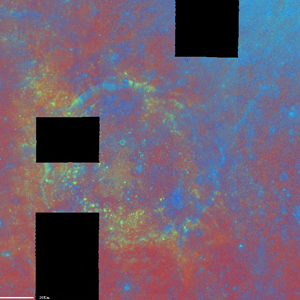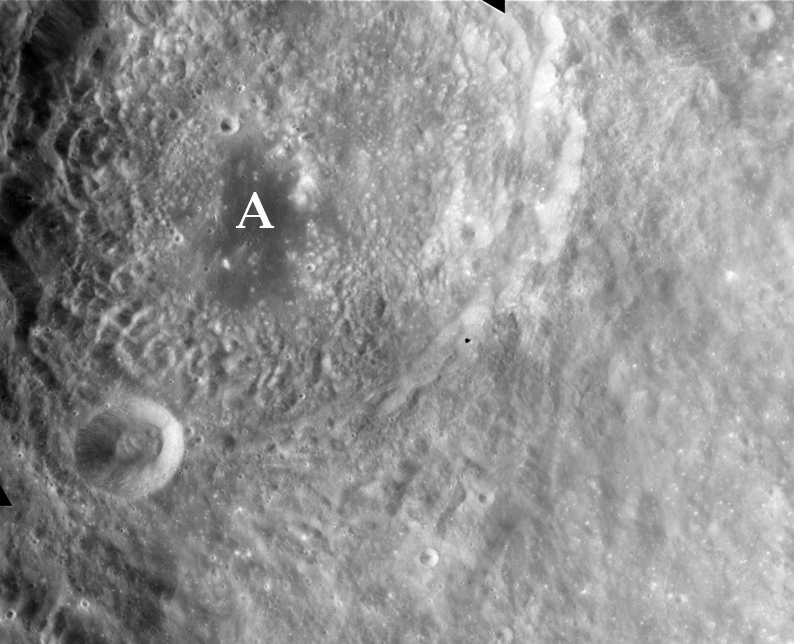
| Project Home | About the Scans | Browse Gallery | Image Map | Support Data | Resources | Ephemeris |
Featured Image - 08/12/2008
Langemak Crater: Window Into the Ancient Lunar Crust
Langemak crater is a 97-km-diameter crater on the lunar farside (Figure 1) some 330 km NW of Tsiolkovskiy crater. Like Tsiolkovskiy, Langemak crater has mare lavas on the crater floor, but this material does not fill the crater as completely as in Tsiolkovskiy. The ejecta of Langemak has an unusual mafic geochemical signature that provides lunar scientists a rare view into the ancient lunar past. Langemak crater was formed during the Imbrian period, and the mare in its floor is approximately 3.7 billion years old (Walker and El-Baz 1982). The mafic materials surrounding Langemak are portions of the ejecta that were thrown out during the impact that formed this crater. Surprisingly, these materials are unlike most ejecta on the lunar farside. Early Apollo geochemical data showed that these materials are enriched in mafic minerls -- materials that are found in volcanic mare and not in the feldspathic highlands crust (Schultz and Spudis 1979). Clementine spectral maps confirm this finding (Figure 2).
Figure 1: Langemak crater (from AS15-M-0317). "A" marks the mare on the crater floor.
(Apollo Image AS15-M-0317 [NASA/JSC/Arizona State University])
How did these mafic materials get on the farside? The most probable scenario is that the Langemak impact excavated these materials from depth. Mafic rocks contain significant amounts of iron and magnesium; the most common mafic rock on the surface of the Earth and Moon is basalt. Did the Langemak event excavate surface basalts or subsurface mafic intrusions? This ancient mafic material comes as a bit of a surprise because exposed mafic rocks are generally rare on the farside, most likely due to the thickness of the ancient feldspathic crust. However, ejected mafic material from Langemak and nearby craters provide evidence for more extensive mare volcanism or near-surface intrusions on the farside. This ancient mafic material would be a prized sample from a period and location in lunar history from which little is known and, thus, would make an excellent sample return target.

Figure 2: Langemak crater, 3-color Clementine map [NASA/USGS]. Green and yellow = mare lavas on crater floor and excavated mafic materials, blue = fresh ejecta from Necho crater to the NE, and black = no data.
References:
Walker, A. S. and F. El-Baz (1982) The Moon and the Planets 27: 91-106.
Schultz, P. H. and P. D. Spudis (1979) Proceedings of the 10th Lunar Science Conference, Lunar and Planetary Institute: 2899-2918.

|
|
Space Exploration Resources |
|
 LPI LPI
|
